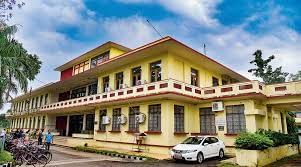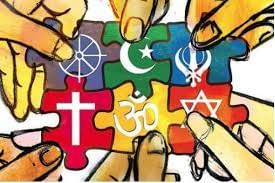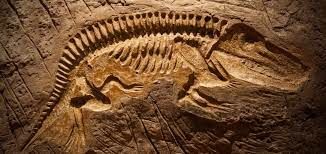UPSC Daily Current Affairs- 13th May 2023 | Current Affairs & Hindu Analysis: Daily, Weekly & Monthly PDF Download
GS-I
Visva-Bharati University
Why in News?
Visva-Bharati University is set to become the first living heritage university to receive the Unesco World Heritage tag.
About Visva-Bharati University:-
- The university was set up by Nobel laureate Rabindranath Tagore in 1921 at Santiniketan, West Bengal.
- He called it Visva-Bharati, which means the communion of the world with India.
- Until independence, it was a college.
- Soon after independence, the institution was given the status of a central university in 1951 by an act of the Parliament.
Rabindranath Tagore’s philosophy about Viswa Bharti:-
- Rabindranath Tagore believed in open-air education.
- He had reservations about any teaching done within four walls.
- This was due to his belief that walls represent the conditioning of the mind.
- Tagore did not have a good opinion about the Western method of education introduced by the British in India.
- On this subject, Tagore and Gandhiji’s opinions matched.
- So, he devised a new system of learning in Visva-Bharati.
- Special feature of Visva Bharti:-
- He allowed students to continue their course till the student and his teacher both are satisfied.
- At Visva-Bharati, if a course demanded by a student is not available, then the university will design a course and bring teachers for that course.
- The university would not be bothered by the consideration of whether there is a demand for the course.
SOURCE: INDIA TODAY
GS-II
The problem with India’s multi-alignment stand
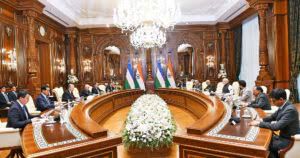
Why in News?
India’s strategic autonomy and policy of non-alignment have evolved into a multi-alignment approach.
About India’s multi-alignment stand
Origin of India’s non-alignment stand:
- There has been a progressive evolution in Indian thinking on forming and joining regional economic and security groupings, since the days New Delhi declared itself as “Non-Aligned” in the 1950s.
- India, thereafter, remained a leading player in the “Non-Aligned Movement” (NAM).
- The 120 members of NAM professed that they would not get drawn into “Great Power” rivalries between the US and USSR.
India’s current multi-alignment stand:
With Russia:
- The disintegration of the Soviet Union in the 1990s led to new groupings and alliances.
- But we are now happily in a position where we are partners, in different ways, with all major global power centres. Economics and economic integration play a far more central role as bridges of cooperation today.
West Asia:
- The most notable decision taken in recent days was after the first summit meeting of the recently established I2U2 grouping, comprising India, Israel, the US and the UAE.
- This was the first time when India and the US partnered two West Asian countries to focus cooperation on use of water resources, food security, health, transportation and space.
USA and QUAD:
- India finds itself linked with the US and Japan far more closely than in the past, in a world order which is becoming more China-centric than in the past.
- This has been the rationale of Quadrilateral Security Dialogue or QUAD, comprising Australia, India, Japan and the US.
Southeast Asian Nations:
- While India has a free trade agreement (FTA) with ASEAN, New Delhi has chosen, for understandable reasons, not to join the Regional Comprehensive Economic Partnership (RCEP), containing 15 East Asian and Pacific nations, including ASEAN members, Australia, New Zealand and China.
Eurasia:
- India holds membership of the Shanghai Cooperation Organisation (SCO), which is a permanent intergovernmental international organisation of Eurasian Nations with a secretariat in Beijing.
India’s view on Ukraine-Russia Conflict:
- India has been actively engaging with Ukraine and expressing solidarity with the Nation in the face of the ongoing conflict with Russia.
- This is in contrast to China’s move with Moscow in order to cement China’s relationship with Russia.
- India has been committed to supporting peace efforts in Ukraine and sees itself as a mediator in the conflict.
- The United States sees this engagement as important because it aligns with its own response to the conflict and helps to bring the two countries’ positions into closer alignment.
Reasons for India’s ambiguity:
- India’s position on the Ukraine war is nuanced and reflects a balancing act between its traditional ties with Russia and its democratic values.
- While India has expressed disapproval of Russia’s military actions in Ukraine.
- it has avoided taking a clear position on the issue in many UN resolutions, which may be due to India’s military and geopolitical dependence on Russia.
- However, India’s views on sovereignty align with universally acceptable Westphalian notions and clash with China’s political philosophy of ‘might is right,‘ which has led to China’s support for Russia in the conflict.
Problem with India’s multi-alignment stand
- India lacks hard power .It has been recently argued that had India been adequately powerful it could have stopped the Ukraine conflict.
- While India has expressed disapproval of the Ukraine war but it has avoided taking any clear positions in several UN resolutions.
- This is understandable that India has often taken an evasive position on conflicts that involve traditional allies.
- However critics argue that India’s ambiguity does not behove a nation aspiring to become a permanent member of the UNSC, which implies a commitment to speak as a global voice against territorial aggression and human rights violations like the case of the Russia -Ukraine conflict.
- This is based on the military dependence of India as it is on the anti-colonial standard of India’s strategic autonomy doctrine.
Way Forward:
A pursuit of ‘multi-alignment’ may have given New Delhi some diplomatic space in the ongoing war in Ukraine. However, it may not be sufficient for India to play the role of a mediator between Russia and Ukraine. India currently lacks the material resources to match the extent of China’s economic and military potential.
Source: The Hindu
Model Prisons Act, 2023
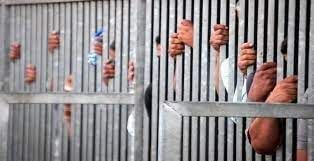
Why in News?
Union Home Ministry recently said that comprehensive ‘Model Prisons Act, 2023’ has been finalized.
About:
- The government had earlier decided to review and revise the colonial-era outdated Prison Act in tune with contemporary modern-day needs and correctional ideology.
- The Model Prison Act, 2023 may serve as a guiding document for the States, and for adoption in their jurisdiction.
- Union Home Ministry had assigned the task of revision of the Prisons Act, 1894 to the Bureau of Police Research and Development.
- The Bureau prepared a draft after holding wide-ranging discussions with State Prison authorities, correctional experts, and others.
- It has been prepared with the objective of holistically providing guidance and addressing the gaps in the existing Prisons Act.
Features:
- Some salient features of the new Model Prisons Act include provision for security assessment and segregation of prisoners, and individual sentence planning.
- Grievance redressal, prison development board, attitudinal change towards prisoners, provision of separate accommodation for women prisoners, and transgender are some of the other features.
- There is also a provision for use of technology in prison administration with a view to bring transparency in prison administration.
- The new Act will focus on vocational training and skill development of prisoners and their reintegration into the society.
Source: Newsonair
Anti-Conversion Legislation In India
Why in News?
The Uttar Pradesh government has released figures regarding the Prohibition of Unlawful Conversion of Religion Act Amid the ongoing controversy over The Kerala Story movie.
- The government said 427 conversion-related cases were reported between January 1, 2021, and April 30, 2023.
Status of the anti-conversion law in India:
- There are several anti-conversion laws in India that regulate the conversion of one religion to another. These laws vary from state to state, and the specific provisions of the laws can differ significantly.
- Constitutional Provision: Article 25 of the Indian Constitution guarantees the freedom to practise, profess, and propagate any religion.
- It also grants all religious groups the right to control their own religious affairs, subject to public morality, health, and order.
- Existing Laws: Religious conversions have not been subject to any national restrictions or regulations.
- Private Member Bills to control religious conversions, however, have repeatedly been introduced in the Parliament since 1954 (but never passed by it).
- Additionally, the Union Law Ministry stated in 2015 that Parliament lacks the legislative authority to enact legislation prohibiting conversion.
- Several states have passed “Freedom of Religion” laws over the years to prohibit forced, fraudulent, or coerced conversions to another religion.
- In general, however, anti-conversion laws in India require that individuals seeking to convert to another religion must obtain permission from the government before doing so.
- Some states have more stringent anti conversion laws than others, and some states have provisions that specifically target certain religious groups or activities.
- In recent years, there has been significant controversy and debate over the use of anti-conversion laws in India.
- Some people argue that these laws are necessary to protect the cultural and social cohesion of the country,
- while others believe that they are used to suppress minority religions and violate the right to freedom of religion.
- The Supreme Court of India has ruled that anti conversion laws are constitutional as long as they are not used to interfere with an individual’s right to freedom of religion.
- However, there have been cases in which these laws have been used to target and persecute minority religious groups.
Supreme Court’s Observations:
- The Supreme Court verdict in Rev. Stainislaus vs. State of Madhya Pradesh in the 1960s is frequently cited in matters involving religious freedom.
- Then Chief Justice of India A.N. Ray dissected Article 25 to hold that “the Article does not grant the right to convert other persons to one’s own religion but to transmit or spread one’s religion by an exposition of its tenets.”
- Recently, the Supreme Court emphasised that Forced religious conversions are “dangerous” and they affect the security of the nation.
- It urged the Union government to “step in” and apprise the court of the measures being taken to prevent such occurrences.
Arguments in Favour of anti-conversion:
- These laws only ban and punish forceful religious conversion.
- Fundamental rights under Article 25 ‘Right to propagate a religion” did not extend to forced conversions.
- There is no fundamental right to convert another person to one’s own religion.
Arguments against anti-conversion:
- According to some activists “Such laws are used to target religious minorities and interfaith couples”.
- These laws would be used to target even voluntary conversions, and curb the fundamental rights “Freedom of conscience” under Article 25.
- These Acts do not satisfy the test of reasonableness and fairness, and also go against the Fundamental rights under Article 14 and Article 21” of the Constitution.
Right to Freedom of religion in India
- The Indian Constitution allows individuals the freedom to live by their religious beliefs and practices as they interpret these.
- In keeping with this idea of religious freedom for all, India also adopted a strategy of separating the power of religion and the power of the State
Constitutional Provisions:
- Article 25: Freedom of conscience and free profession, practice and propagation of religion
- Article 26: Freedom to manage religious affairs
- Article 27: Freedom to pay taxes for promotion of any particular religion
- Article 28: Freedom to attend religious instruction or worship in certain educational institutions.
Way Forward:
The right to religion did not include the right to convert other people to a particular religion, especially through fraud, deception, coercion, allurement, and other means. The conversion laws must be strengthened and rightly so to stop the use of lures and force but they should not discriminate among religions while identifying the perpetrators.
Source: The Hindu
GS-III
Carbon Dating
Why in News?
The Allahabad High Court recently ordered a “scientific survey”, including carbon dating, of a “Shivling” said to have been found at the Gyanvapi mosque complex in Varanasi after setting aside a lower court order on the issue.
About:
- Carbon dating is a widely-used method to establish the age of organic materials, things that were once living.
- Living things have carbon in them in various forms. The dating method is based on the fact that Carbon-14 (C-14), an isotope of carbon with an atomic mass of 14, is radioactive, and decays at a well-known rate.
- The most abundant isotope of carbon in the atmosphere is C-12. The ratio of C-12 to C-14 in the atmosphere is almost static, and is known.
- Plants and animals acquire C-12 and C-14 in roughly the same proportion as is available in the atmosphere.
- When they die, their interactions with the atmosphere stops. While C-12 is stable, the radioactive C-14 reduces to one half of itself in about 5,730 years — known as its ‘half-life’.
- The changing ratio of C-12 to C-14 in the remains of a plant or animal after it dies can be measured, and can be used to deduce the approximate time when the organism died.
- Carbon dating cannot be used to determine the age of non-living things like rocks. Also, the age of things that are more than 40,000-50,000 years old cannot be arrived at through carbon dating.
Radiometric dating methods:
- These are used to calculate the age of inanimate things. Instead of carbon, decays of other radioactive elements that might be present in the material become the basis for the dating method. Two commonly employed methods for dating rocks are
- Potassium-argon dating: The radioactive isotope of potassium decays into argon, and their ratios can give a clue about the age of rocks.
- Uranium-thorium-lead dating: Uranium and thorium have several radioactive isotopes, and all of them decay into the stable lead atom. The ratios of these elements present in the material can be measured and used to make estimates about age.
- Cosmogenic nuclide dating: It is used to determine how long an object has remained exposed to sunlight. It is regularly applied to study the age of ice cores in polar regions.
Source: Indian Express
Central Board of Indirect Taxes and Customs (CBIC)
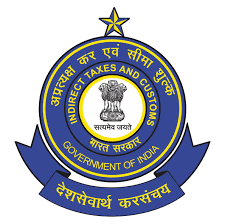
Why in News?
Recently, the Central Board of Indirect Taxes and Customs (CBIC) rolled out a module for automated scrutiny of GST returns.
About Central Board of Indirect Taxes and Customs (CBIC):-
- Central Board of Indirect Taxes and Customs is a part of the Department of Revenue under the Ministry of Finance.
- It is a statutory body established under the Central Boards of Revenue Act, of 1963.
- It was formed in 1964 when the Central Board of Revenue was split into the Central Board of Direct Taxes (CBDT) and the Central Board of Excise and Customs.
- Central Board of Excise and Customs was renamed the Central Board of Indirect Taxes and Customs in 2018.
- It is the nodal national agency responsible for administering:-
- Customs
- GST
- Central Excise
- Service Tax
- Narcotics in India.
- The Board is the administrative authority for its subordinate organizations, including Custom Houses, Central Excise and Central GST Commissionerate and the Central Revenues Control Laboratory.
- Functions performed by the CBIC include:-
- Formulation of policy concerning levy and collection of Customs, Central Excise duties, Central Goods & Services Tax and IGST.
- Prevention of smuggling.
- Administration of matters relating to Customs, Central Excise, Central Goods & Services Tax, IGST and Narcotics to the extent under CBIC’s purview.
Source: Business Standard
|
63 videos|5408 docs|1146 tests
|

